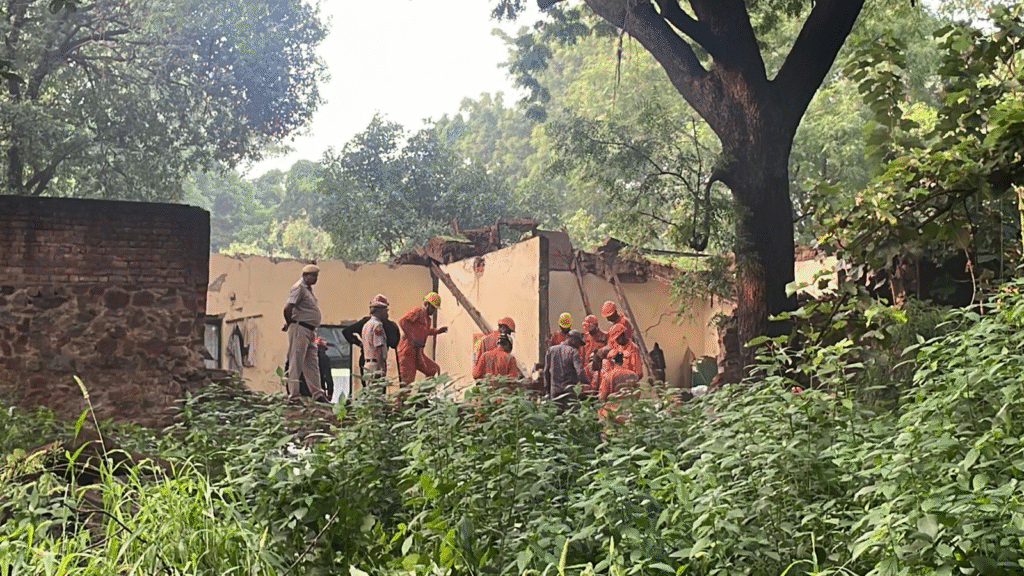Delhi, India – A section of a smaller structure within the premises of the iconic Humayun Tomb collapsed on Friday afternoon, leaving at least 6 Killed,12 people injured and sparking urgent rescue operations. Officials have confirmed that the main dome of the 16th-century UNESCO World Heritage Site remains untouched.

Incident Overview
The collapse occurred around 3:55 PM near the Nizamuddin area, at an under-construction site adjacent to the monument. Initial reports indicated that 8–9 people were feared trapped under the debris, but rescue teams from the Delhi Police, Fire Services, and National Disaster Response Force (NDRF) managed to pull 10–12 people from the rubble. All injured have been rushed to hospitals including AIIMS Trauma Centre and LNJP Hospital.
Eyewitness Accounts
Vishal Kumar, a worker at the site, recounted the tense moments following the collapse:
“When we heard the noise, my supervisor came running. We called for people and the administration. Slowly, we took out the people who were trapped,” he told PTI.
Extent of Damage
Authorities clarified that the central mausoleum remains undamaged. The affected area is part of a peripheral section under construction, some of which collapsed onto the outer walls of the main complex. Ratish Nanda, conservation architect at the Aga Khan Trust for Culture (AKTC) — the body overseeing restoration — confirmed there was “no damage to the historic core of the monument.”
Possible Cause
While the official cause is yet to be determined, preliminary assessments suggest that recent heavy rains may have weakened the structure, leading to its collapse. Engineers and safety experts are currently inspecting the site.
Historical Significance of Humayun’s Tomb
Built in the mid-16th century, Humayun’s Tomb is the final resting place of Mughal Emperor Humayun. Located at the intersection of Mathura Road and Lodhi Road in Delhi, it is considered one of the finest examples of Mughal architecture and a precursor to the Taj Mahal. The monument is a popular tourist attraction, drawing visitors from across the world.
Rescue and Safety Measures
Rescue operations are ongoing, with teams ensuring no one remains trapped. The area has been cordoned off, and structural engineers will conduct a detailed stability check before any reconstruction work begins.
VIDEO | Delhi: Five dead after wall of dargah near Humayun's Tomb collapses.
— Press Trust of India (@PTI_News) August 15, 2025
Joint Commissioner of Police, South Range, Sanjay Kumar Jain says, "Two people have been sent to AIIMS Trauma Centre and one to LNJP. As of now, five people admitted to AIIMS Trauma Centre have been… pic.twitter.com/aLa10YBiPs
